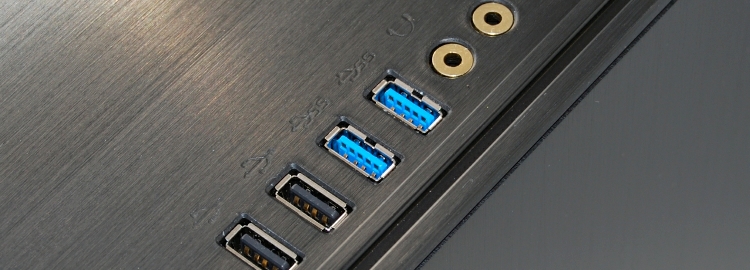Installation Impressions
Working with large cases such as the Cubitek HPTX-ICE is generally easy and, for the most part, the HPTX-ICE was no exception. For testing we first installed the following hardware: OCZ ZX 1000w PSU, Asrock 890FX Deluxe4 motherboard, 8GB (2x4GB) Kingston RAM, AMD Phenom II X6 1100T CPU with the Prolimatech Megahalems and Inno3D GeForce GTX 580 OC GPU. We also crammed in half a dozen Western Digital Scorpio Blue 500GB HDDs and a Hitachi Deskstar 7K1000 1TB drive.


We kicked things off by installing the Prolimatech Megahalems CPU bracket to the back of the Asrock 890FX Deluxe4, though forgetting this step is no biggie, as it can be performed with the board installed thanks to that hole in the motherboard tray. The motherboard slotted into place without any fuss and connecting everything else was as easy as can be.
Installation of the optical drive, in this case a DVD-RW, was very straightforward as Cubitek went with the traditional method here. Installing the hard drives was just as simple, though slightly less conventional as you must attach four rubber wheels to the drives before inserting them into the bays.

Once inserted, there's a thin aluminum strip that slides across the drive bay locking the drives into place. This method works well, but for a $360 case, we were disappointed to find a complete lack of hot-swappable drive bays.

Installing the OCZ ZX 1000w PSU was very simple using the bottom mounting position, and there was loads of room to accommodate an even bigger power supply, such as the Thermaltake Toughpower 1500w, should you need such an insane unit. While we only took photos of one power supply installed, we successfully installed two without any issues. Likewise, we photographed the HPTX-ICE with just one GeForce GTX 580 installed, but we found that it easily handles two or more.

Extra-long graphics cards that overhang the motherboard, such as the Radeon HD 6990, fit with surprising ease, as there is an insane 17" of clearance. As shown in the photo, there is plenty of room behind the graphics card so installing things such as additional power cables should be problem-free.


During installation, we found that cable management only caters to the HPTX form factor. Although this is an HPTX case, people will inevitably use it for other board sizes. When using ATX boards as we did, things can be quite messy, as cables have to stretch quite a distance from the holes to components.
Another problem: once hardware was installed, we couldn't re-attach the right door flush. At best, we ended up with a slight bow in the door, which looked strange.
With everything installed and the doors squeezed on, we turned the system on. And then we turned it right back off, as the front fan was making a loud noise like it was hitting a cable. We removed the doors again and inspected the fan, though we didn't see a problem immediately. So we dug deeper.
After removing the fan, we discovered that it was sucking in the dust filter and this was causing all the racket. There didn't appear to be any way to solve this other than removing the dust filter, which we did, and the fan worked fine.
